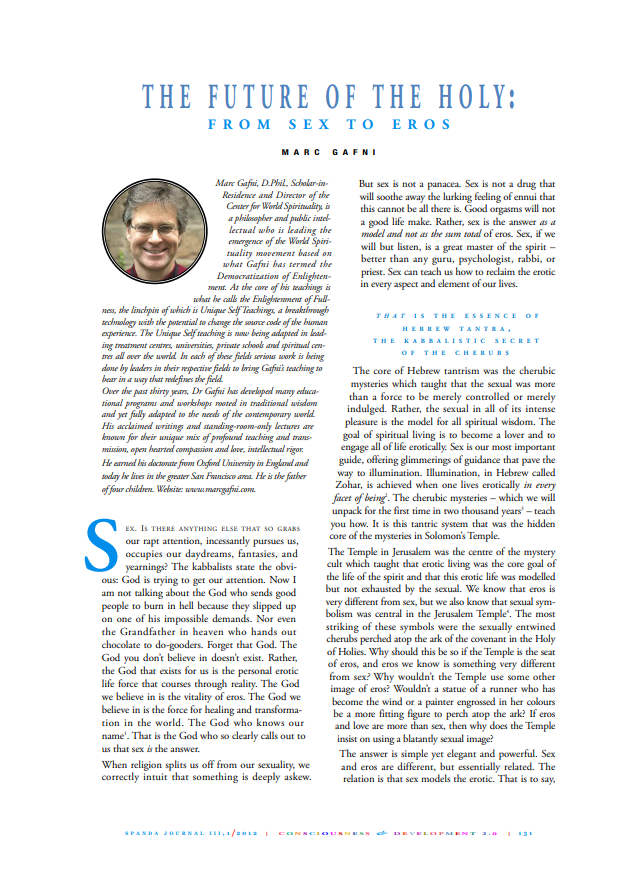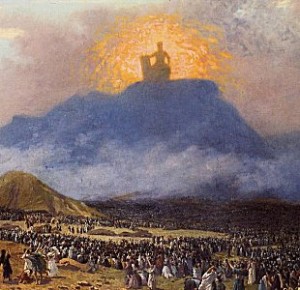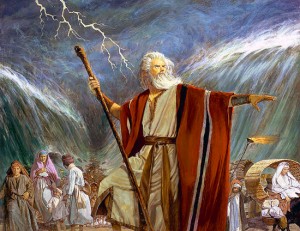Marc Gafni’s “The Future of the Holy: From Sex to Eros” Appearing in Spanda Journal
 Marc Gafni was recently featured in Spanda Journal, the peer-reviewed biannual publication of the Spanda Foundation.
Marc Gafni was recently featured in Spanda Journal, the peer-reviewed biannual publication of the Spanda Foundation.
The Spanda Foundation offers publications related to “sustainable advancement of peace, knowledge, and understanding.”
Marc’s article, entitled “The Future of the Holy: From Sex to Eros,” begins like this:
“Sex. Is there anything else that so grabs our rapt attention, inessantly pursues us, occupies our daydreams, fantasies, and yearnings? The kabbalists state the obvious: God is trying to get our attention. Now I am not talking about the God who sends good people to burn in hell because they slipped up on one of his impossible demands. nor even the Grandfather in heaven who hands out chocolate to do-gooders. Forget that God. The God you don’t believe in doesn’t exist. Rather, the God that exists for us is the personal erotic life force that courses through reality. The God we believe in is the vitality of eros. The God we believe in is the force for healing and transformation in the world. The God who knows our name. That is the God who so clearly calls out to us that sex is the answer.”
For the entire article, click: SPANDAJOURNAL_C&D2.0_Marc_Gafni.
See: Gafni, M. (2012). “The Future of the Holy: from Sex to Eros”, Spanda Journal, ed. S. Momo, III,1: 131-139.


 Implications: A Great Voice Which Does Not Cease
Implications: A Great Voice Which Does Not Cease By
By  The First Stage: The Silence of Absence
The First Stage: The Silence of Absence “As the Kabbalists point out, the word Moses spelled backwards is Ha Shem, meaning ‘the name.’ Importantly, Ha-shem in biblical Hebrew also is the most common reference to God’s name. When you respond to your call and realize your soul print, fully becoming your name, you become one with God. When Moses did this, he found his voice, he became a prophet.”
“As the Kabbalists point out, the word Moses spelled backwards is Ha Shem, meaning ‘the name.’ Importantly, Ha-shem in biblical Hebrew also is the most common reference to God’s name. When you respond to your call and realize your soul print, fully becoming your name, you become one with God. When Moses did this, he found his voice, he became a prophet.”
